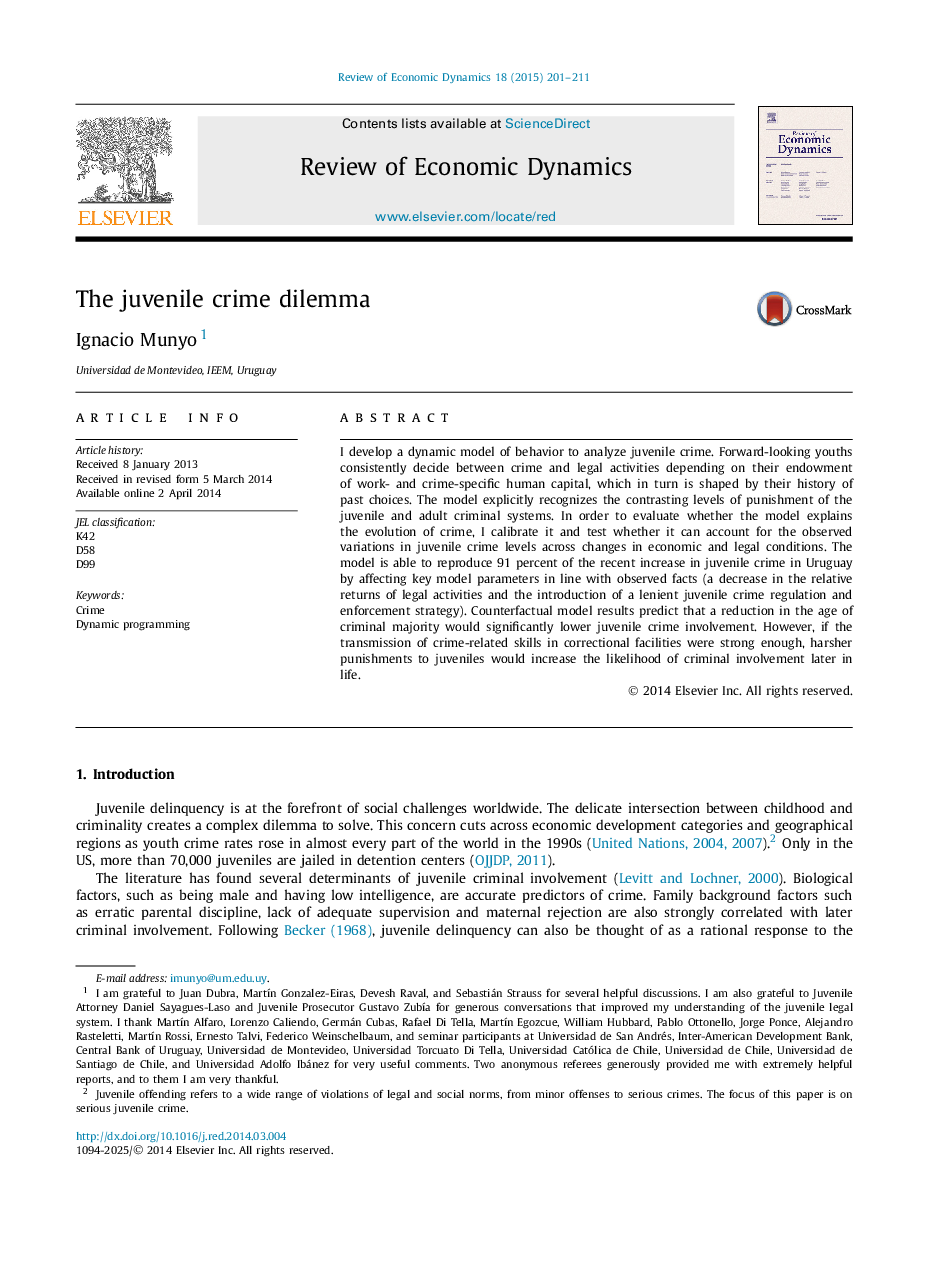| Article ID | Journal | Published Year | Pages | File Type |
|---|---|---|---|---|
| 986642 | Review of Economic Dynamics | 2015 | 11 Pages |
I develop a dynamic model of behavior to analyze juvenile crime. Forward-looking youths consistently decide between crime and legal activities depending on their endowment of work- and crime-specific human capital, which in turn is shaped by their history of past choices. The model explicitly recognizes the contrasting levels of punishment of the juvenile and adult criminal systems. In order to evaluate whether the model explains the evolution of crime, I calibrate it and test whether it can account for the observed variations in juvenile crime levels across changes in economic and legal conditions. The model is able to reproduce 91 percent of the recent increase in juvenile crime in Uruguay by affecting key model parameters in line with observed facts (a decrease in the relative returns of legal activities and the introduction of a lenient juvenile crime regulation and enforcement strategy). Counterfactual model results predict that a reduction in the age of criminal majority would significantly lower juvenile crime involvement. However, if the transmission of crime-related skills in correctional facilities were strong enough, harsher punishments to juveniles would increase the likelihood of criminal involvement later in life.
